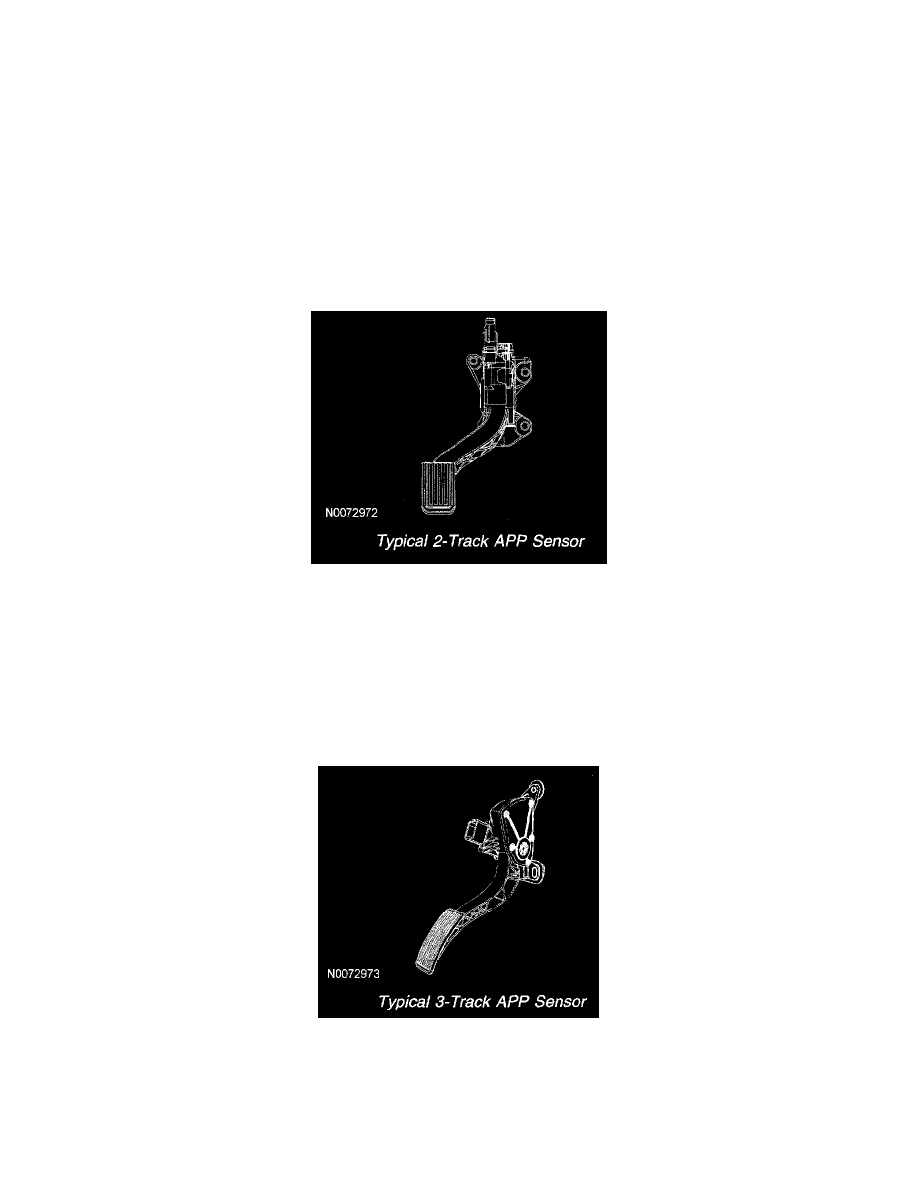Grand Marquis V8-4.6L Flex Fuel (2010)

Accelerator Pedal Position Sensor: Description and Operation
ENGINE CONTROL COMPONENTS
Accelerator Pedal Position (APP) Sensor
The APP sensor is an input to the powertrain control module (PCM) and used to determine the amount of torque requested by the operator. Depending
on the application, either a 2-track or 3-track APP sensor is used.
2-Track APP Sensor
There are 2 pedal position signals in the sensor. Both signals, APP and APP2, have a positive slope (increasing angle, increasing voltage), but are
offset and increase at different rates. The 2 pedal position signals make sure the PCM receives a correct input even if 1 signal has a concern. The PCM
determines if a signal is incorrect by calculating where it should be, inferred from the other signals. If a concern is present with one of the circuits the
other input is used. There are 2 reference voltage circuits, 2 signal return circuits, and 2 signal circuits (a total of 6 circuits and pins) between the PCM
and the APP sensor assembly. The pedal position signal is converted to pedal travel degrees (rotary angle) by the PCM. The software then converts
these degrees to counts, which is the input to the torque based strategy. For additional information, refer to Torque Based Electronic Throttle Control
(ETC). See: Computers and Control Systems/Electronic Throttle Control Module/Description and Operation
Typical 2-Track APP Sensor
3-Track APP Sensor
There are 3 pedal position signals in the sensor. Signal 1, APP, has a negative slope (increasing angle, decreasing voltage) and signals 2 and 3, APP2
and APP3, both have a positive slope (increasing angle, increasing voltage). During normal operation, APP is used as the indication of pedal position
by the strategy. The 3 pedal position signals make sure the PCM receives a correct input even if one signal has a concern. The PCM determines if a
signal is incorrect by calculating where it should be, inferred from the other signals. If a concern is present with one of the circuits the other inputs are
used. The pedal position signal is converted to pedal travel degrees (rotary angle) by the PCM. The software then converts these degrees to counts,
which is the input to the torque based strategy. There are 2 reference voltage circuits, 2 signal return circuits, and 3 signal circuits (a total of 7 circuits
and pins) between the PCM and the APP sensor assembly.
Typical 3-Track APP Sensor
